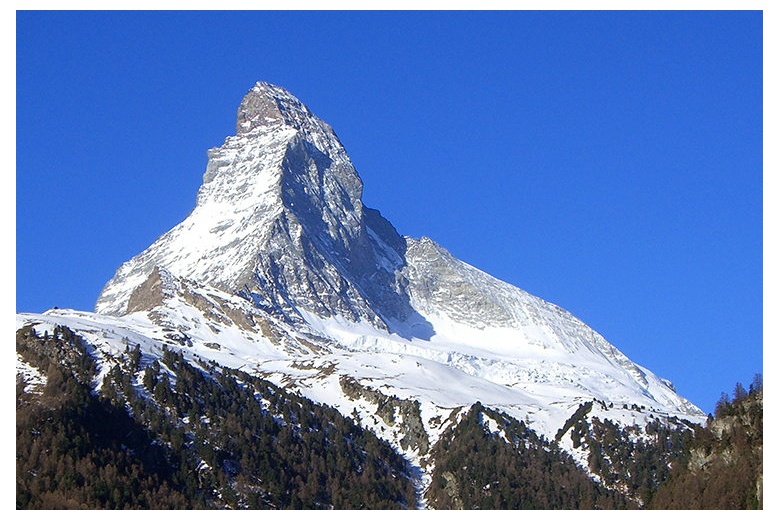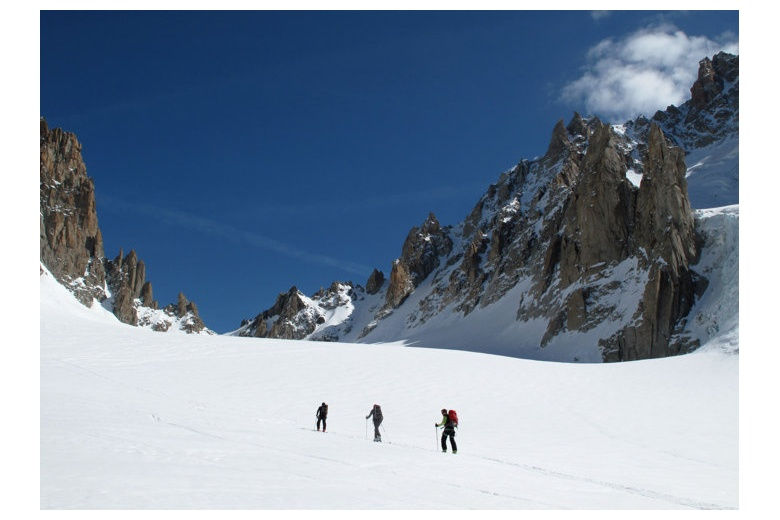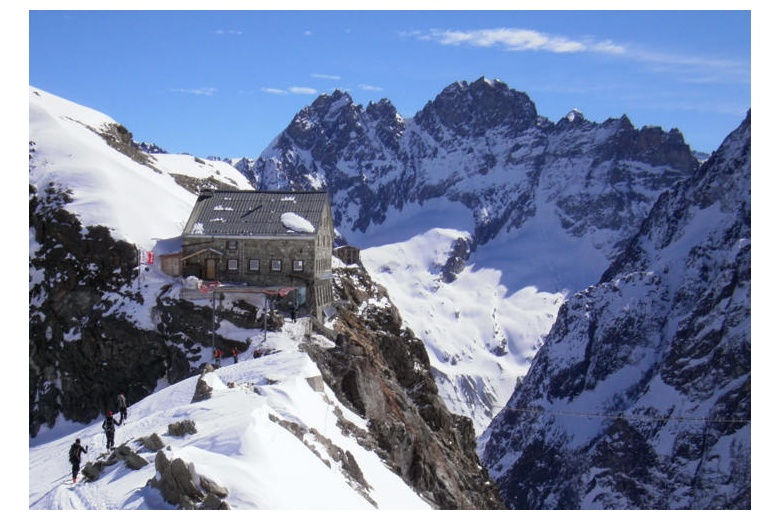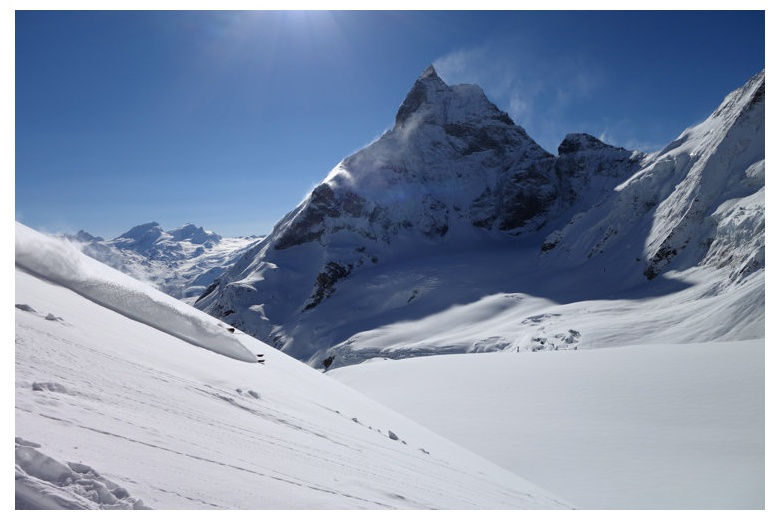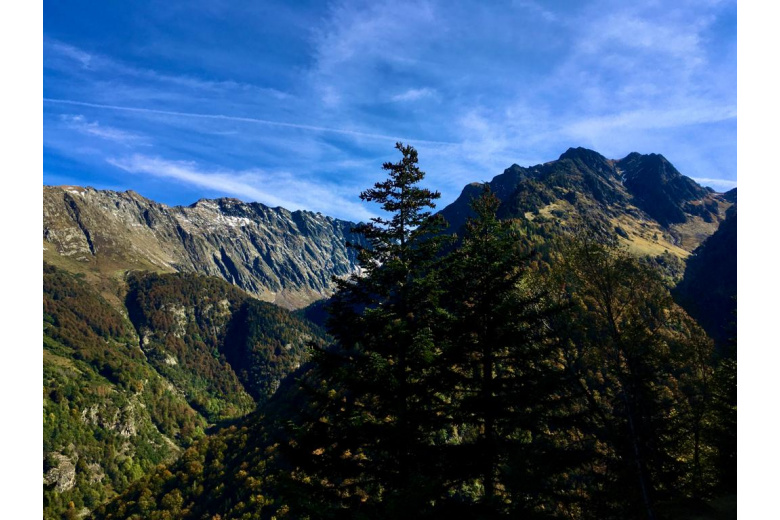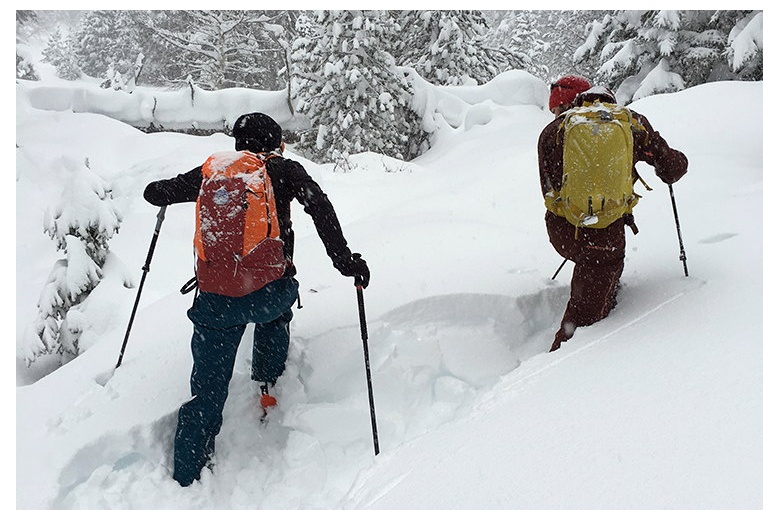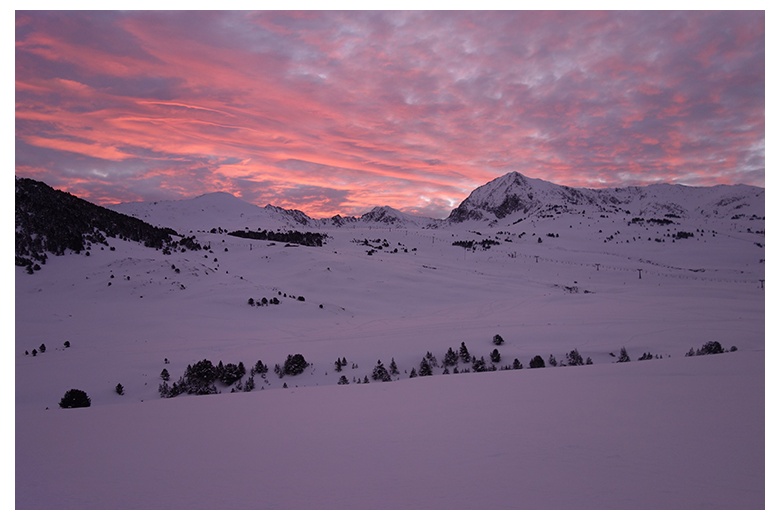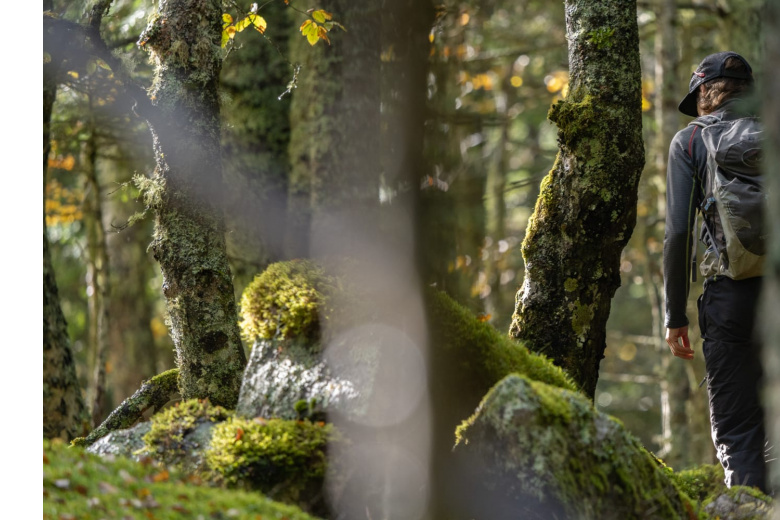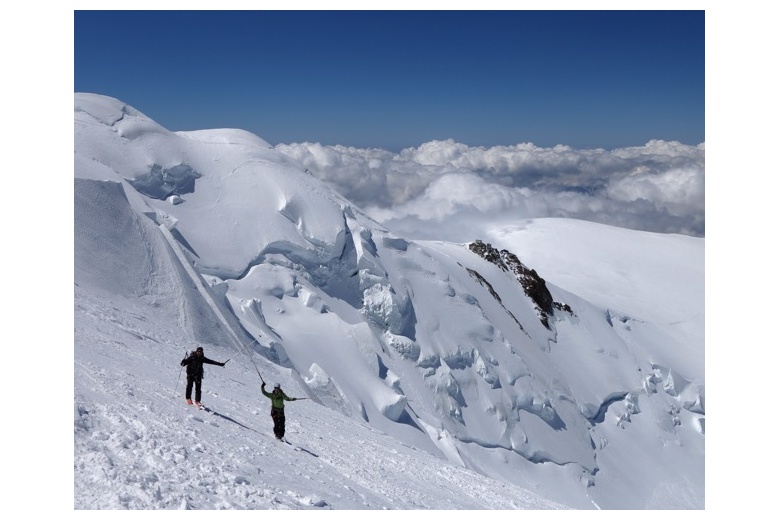Day 1:
Traveling to Chamonix. Meeting in the afternoon.
Day 2:
Argentière (1250m) - Grands Montets cable car (3275m) - Descent to Argentière Glacier – Col de Chardonnet (3323m) - Saleina Glacier - Fenêtre du Saleina (3263m) – Trient Hut (3170m)
Duration: 6h
Elevation gain/loss: + 965m / - 940m
Day 3:
Trient Hut (3170m) - Champex (1466m) - Transfer to Verbier - Cable car to Col des Gentianes (2980m) - Mont Fort Hut (2457m)
Duration: 4h
Elevation gain/loss: + 100m / - 900m
Day 4:
Mont Fort Hut (2457m) - Col du Chaux (2940m) - Col de Momin (3003m) - Prafleuri Hut (2662m)
Duration: 5h
Elevation gain/loss: + 700m / - 900m
Day 5:
Prafleuri Hut (2662m) - Col des Roux (2804m) – Lac de Dix - Pas du Chat (2386m) – Dix Hut (2928m)
Duration: 5h
Elevation gain/loss: + 850m / - 400m
Day 6:
Dix Hut (2928m) – Serpentine Glacier - Pigne d'Arolla (3796m) - Vignettes Hut (3160m)
Duration: 5h
Elevation gain/loss:+ 850m / - 640m
Day 7:
Vignettes Hut (3160m) - Col de l'Evêque (3392m) - Col de Mont Brullé (3213m) - Col de Valpelline (3568m) - Zmuttgletscher - Zermatt (1600m)
Duration: 6h
Elevation gain/loss: + 1173m / - 2670m
Included:
- UIAGM/AEGM mountain guide.
- Personal advises prior the trip.
- Reservations management services.
- Half-board hut accommodation during the route.
Not included:
- Travelling to Chamonix.
- Transfers or/and cable cars.
- Snacks and beverages during the stages.
- Extra expenses due to program variations of members and guides.
General Information:
- Each group member taking part in the ski route is required to possess an at date license issued by the Mountaineering Federation valid in the Alps.
- Mountain skiing is an extraordinary pass time but it involves risks. Each member of this journey takes full responsibility of what could happen.
- The mountain guide reserves the right to modify the program depending on weather conditions, weather, group factor or any other cause that in his opinion may be decisive.
- Touring skis (adjusted bindings)
- Touring ski boots
- Telescopic touring ski poles
- Skins
- Wax for limiting the snow to build up under the skis
- Anti snow plate crampons. Preferably made of steel
- Ice ax
- Helmet (optional)
- Ski crampons
- Snow shovel
- Probe 240cm
- Transceiver (batteries in charge)
- Sunglasses
- Goggles
- Sun cream 50+
- Lip balm 50+
- Thin ski gloves
- Thick ski gloves
- Replacement gloves
- Medium thickness socks + spare
- Touring ski pants
- Thermal underpants
- Gore-Tex ski pants
- Gore-Tex ski jacket
- Fleece
- Primaloft
- Thermal undershirt + spare
- Buff
- Hat
- Cap
- Backpack 40l max.
- Snacks (sandwich, dry nuts, cereal bars,...)
- Water bottle 1.5l or Camelback bag
- Medicines for personal use
- Headlight + batteries
- Light harness
- Dyneema ring 120cm
- Ice screw
- Two screw-lock carabiners
- Silk sleeping bag
- Isothermal blanket
- Watch / altimeter
- Mobile phone
- ID
- Cash (provide foreign currency)
- Mountaineering license valid for the Alps.
- Abroad Health insura
For the outdoor activity that you plan to be successful it is very important that it accommodates to your level, both physical and technical. Here we present some guidelines so that you can get an idea of what your level is according to the programs we propose. However, we recommend reaching to us so we can help you personally and adapt the program to your conditions.
Ski touring & Freeride
TECHNICAL level
- 1 = Beginner. Never ski toured before. Is a regular ski resort skier that occasionally goes off-piste. Black runs are not a problem for its level.
- 2 = Starter. Has experienced ski touring, climbing with skins (skinning). Is familiar with all the ski touring gear. Capable of uphill kick turning on not very steep terrain. Knows how to place and use ski crampons. Ski climbs safely through all kinds of snows on a trace. Skies down efficiently on ungroomed terrain, even on steep but wide slopes.
- 3 = Intermediate. Regular touring skier, . Trained on the basic techniques of skinning and uphill kick turn. Can change directions on slopes of 35º. Able to place ski crampons and crampons in an autonomous way. Skies down effectively on all kinds of ungroomed terrain and steepness.
- 4 = Advanced. Masters the technique of skinning on slopes up to 40º - 45º. Moves safely with skins on steep and icy slopes. Basic knowledge of mountaineering, use of crampons and ice axe as well as rope work. Skies down safely on every snow condition and steepness.
- 5 = Very advanced. Extensive experience in touring and mountaineering ski. Moves effectively changing direction on all kind of terrain, even on exposed places. Very good skier on every snow condition and steep terrain, as well as in exposed passages. Goes frequently on one-day or multi-day ski tours, spending the nights in huts. Familiar using the ice axe and crampons on all types of mountain domain. Knowledge and training on rope work, protection and self-arrest.
FITNESS level
- 1 = Able to ascend 600 meters of elevation gain skinning for 3 hours carrying a light backpack of about 5 kg.
- 2 = Able to ski tour for 4 or 5 hours overcoming 800 meters of elevation gain with a backpack of about 5 kg at a 300 meters an hour pace.
- 3 = Able to accomplish 5 to 7 hours routes and 1000 meters elevation gain with a backpack of about 7 kg at a 300 meters an hour pace.
- 4 = Able to succeed on alpine routes of up to 8 hours and 1200 meters of elevation gain with a backpack of about 8 kg at a 400 meters an hour pace.
- 5 = Able to carry out alpine routes of more than 8 hours long and between 1500 and 2000 meters elevation gain with a 10 kg backpack at a 400 meters an hour pace.

